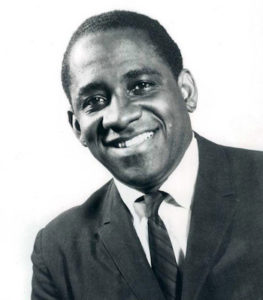
Mongo Santamaria, 1969
*Mongo Santamaria was born on this date in 1917. He was an Afro Cuban percussionist and bandleader.
Ramón 'Mongo' Santamaria Rodríguez was born and raised in Havana, Cuba. He learned the rumba as a kid in the streets of Havana's Jesús María barrio. He then learned the bongos from Clemente "Chicho" Piquero and toured with successful bands such as the Lecuona Cuban Boys and Sonora Matancera.
In 1950, he moved to New York City, where he became Tito Puente's conguero. In 1957, he joined Cal Tjader's band. He then formed his own charanga while recording some of the first rumba and Santería music albums. By the decade's end, he had his first pachanga hit, "Para ti." He then became a pioneer of boogaloo with "Watermelon Man" and later signed record deals with Columbia, Atlantic, and Fania.
He collaborated with salsa artists and became a member of the Fania All-Stars, often showcasing his conga solos against Ray Barretto. In later years, Santamaría recorded mostly Latin jazz for Concord Jazz and Chesky Records. In 1959, Santamaría recorded "Afro Blue," the first jazz standard built upon a typical African 3:2 cross-rhythm, or hemiola. In 1960, Santamaría went to Havana, Cuba, with Willie Bobo to record two albums, "Mongo In Havana" and "Bembe y Nuestro Hombre En La Habana." After recording, he returned to New York City to form the charanga Orquestra La Sabrosa.
In late 1962, Chick Corea left Santamaria’s band, and Herbie Hancock got the temporary job, which led to the night that Santamaría discovered "Watermelon Man," which reached the top of the pop charts: The sudden success of the song propelled Santamaría into his niche of blending Afro Cuban and African American music. He went on to record Cuban-flavored versions of popular R&B and Motown songs. Later in his life, Santamaría reminisced: "In the neighborhood where I came from, we had all kinds of music, mostly from Africa. We did not leave it alone; we changed it our way. The music we made dealt with religion and conversation. The drum was our tool, and we used it for everything".
Mongo Santamaria died on February 1, 2003, in Miami, Florida, after suffering a stroke at the age of 85. He is buried in Woodlawn Park Cemetery and Mausoleum in Miami, Florida.